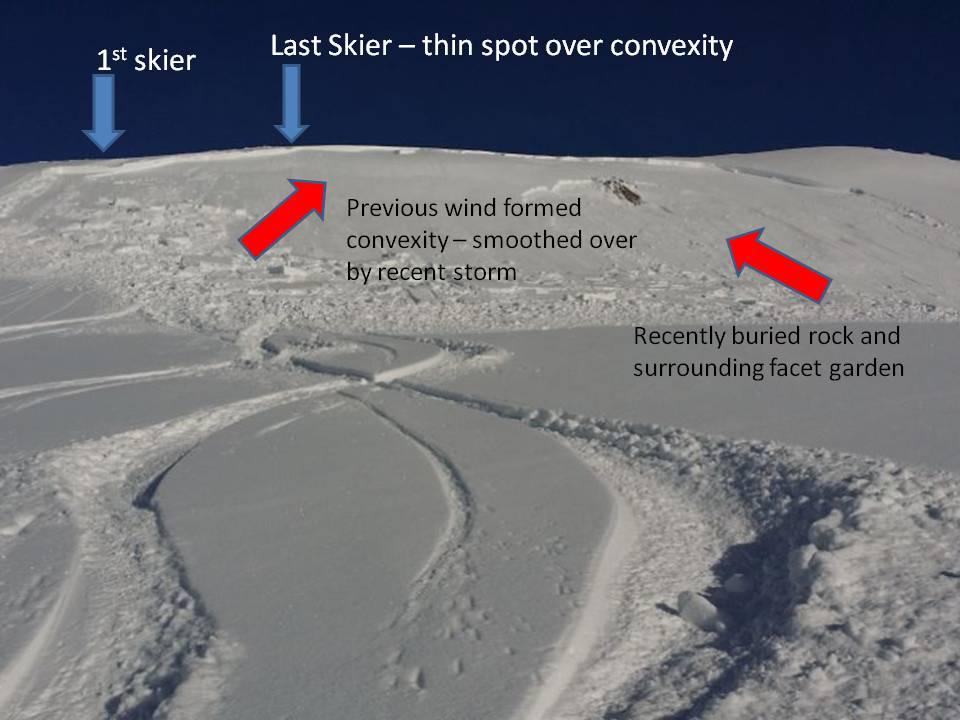I thought it might be useful to point out what I see as a potential lingering issue in regards to the current windslab avalanche problem that has been acting up over the last few days in the Columbia Mountain region.
Normally in this climate region, windslabs tend to form over other rounded grains, and though they(the slab and underlying layer) may initially be of different resistances, they tend to both be compromised of rounded grains and therefore begin to bond within a relative short timeframe (I'm talking days as opposed to weeks).
I would suggest that the recent windslabs that have formed during the last week of Arctic air influence may not heal as quickly as would be the norm. This is because the grains underlying the recent windslabs had the time to become faceted before burial due to the cold air and clear skies of the last week, and are therefore more likely to form a persistent problem that may linger into the next snow loading cycle.
Right now the ski quality is variable and will be a bit of a limiting factor in terrain choice - but once the snow falls and ski quality improves, this will be something to keep in the back of your mind as you choose where and where not to put your tracks.
Scott Davis, ACMG/IFMGA Mountain Guide
Ps the photo is not recent but illustrates a windslab over buried facets - triggered by last (4th) skier on a heavily used ski run with only 15-20cm of new snow

